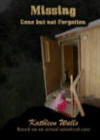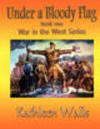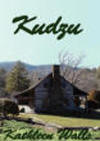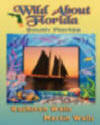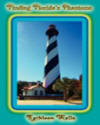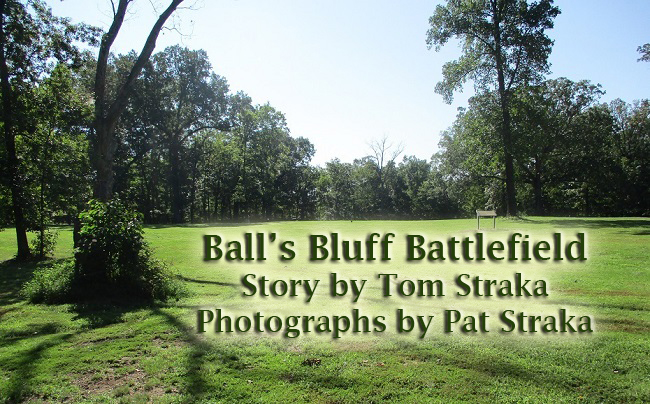
The Battle of Ball’s Bluff was a small
one by Civil War standards, but a consequential one. It
occurred early in the War on October 21,1861, by accident,
just a couple of months after Bull Run (or First Manassas).
The battlefield is on U.S. 15 in Leesburg, Virginia, just
before the highway crosses into Maryland on to the Antietam
and Gettysburg battlefields. We’ve passed it many times and
recently had the time to visit. It turned out to be a well
worth the stop; it is a small battlefield, but an interesting
one that abuts the Potomac River. The 300-foot bluff is
surprising, while being so close to the ocean, it contains
100-foot cliffs, is covered with outcroppings, and only a
single steep trail led up to the top. Union troops had to
cross the Potomac River twice to reach the battlefield, as
Harrison Island stood in the middle of the river. Union
pickets protected the island during the crossing, taking cover
behind entrenchments for protection from hostile Confederate
fire.
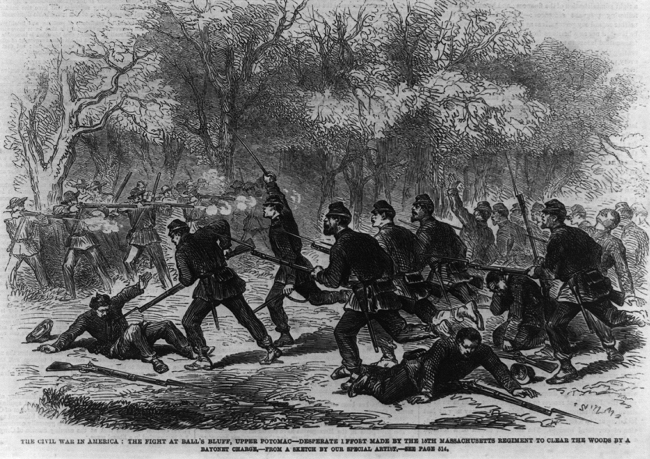 |
| Desperate effort by the 15th Massachusetts
to clear the woods with a bayonet charge. The title photograph shows this same battlefield today. Credit: Library of Congress |
The battlefield is in a
regional park which contains seven hiking trails, ranging
from just over two miles to a half mile in length. The Civil
War history is mainly on the Battlefield Interpretative Loop,
covering 0.8 miles on a fairly level dirt path through forest
and open fields. Interpretative signs highlight and explain
significant areas. The main battlefield is near a small
national cemetery and the park has been designed to recreate
the look of the 1861 battlefield. Still, of course, the
battlefield looked much different in 1861; the battle was
important enough to generate artwork that gives an idea of how
it actually looked.
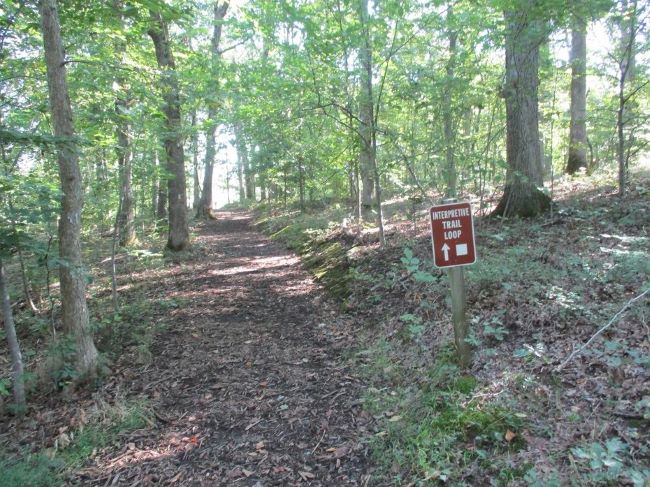 |
| Well-maintained trails lead to the battlefield and
allow for other hiking, like to the edge of the Potomac River. |
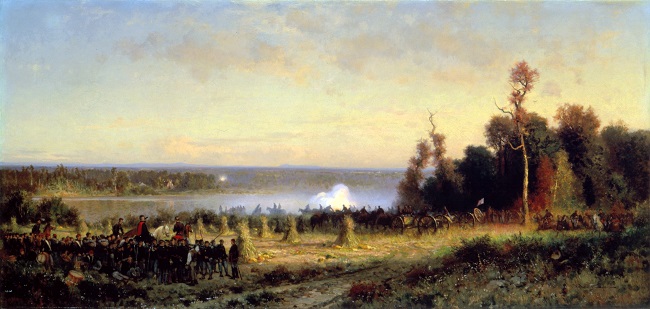 |
| Cannonading on the Potomac by Alfred W. Thompson,
c1869, gives an idea of what the battlefield was like in 1861. Credit: The White House Historical Association. |
Following the Battle of Bull Run, the
Union and Confederate armies occupied opposite sides of eh
Potomac River, with the river serving as a relatively
stationary front for the War. On the Union side of the river
was the Corps of Observation, commanded by Brig. General
Charles P. Stone, with a primary mission to keep an eye on
Confederate movements. On the Confederate side of the river
rebel troops commanded by Col. Nathan “Shanks” Evans. At the
time of battle, each side would have a strength of about 1,700
soldiers.
On October 20, the 15th
Massachusetts Infantry, located on Harrison Island and facing
Ball’s Bluff, was ordered to cross the river to reconnoiter
enemy positions. Observing in the dark, inexperienced troops
identified a group of tents about a mile inland from the
bluff. This was the
accidental nature of the battle, as the Confederate camp
turned out to be a row of trees. General Stone decided to take
advantage of the information and sent a raiding party to
attack the camp. When the mistake was discovered, General
Stone decided to reinforce the raiding party and have them do
a reconnaissance of the area to determine Confederate strength
near Leesburg. Small skirmishes occurred and both Confederate
and Union troops were reinforced. Union reinforcements were
limited by inadequate boats for a river crossing. At about
3:00 p.m. on October 21 the
actual battle began and lasted until after dark.
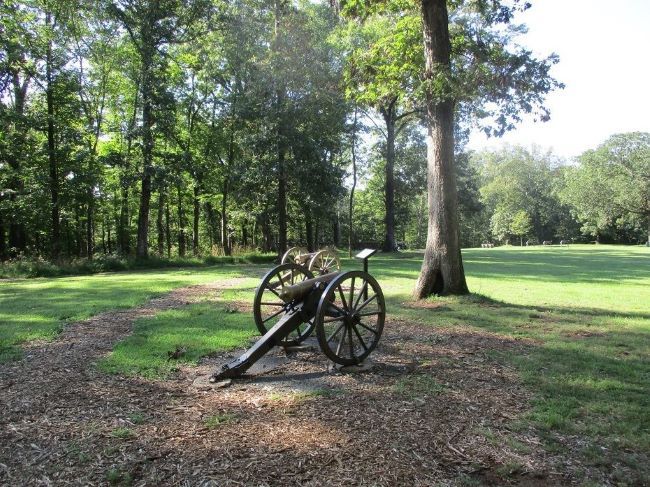 |
| Many cannons are on
the battlefield. |
As it turned dark, the 17th
Mississippi regiment arrived, allowing for a culminating
assault which resulted in a Union retreat. The Federal troops
were forced down the steep bluff against and into the river.
Boats attempting to reach Harrison Island were capsized and
many Federal troops were drowned.
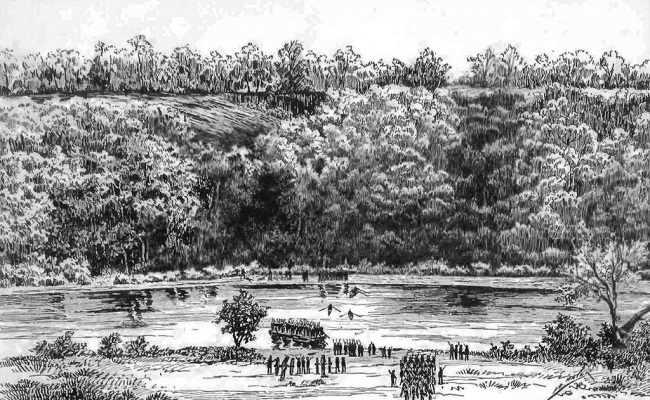 |
| Union troops crossing the Potomac River to Ball’s Bluff. Credit: Library of Congress |
There is still a trail down to the river
and it is steep. You can look across to Harrison Island and
think about swimming across as some of the Union troops tried.
It looks like a daunting swim. Besides the many who drowned,
hundreds of Union soldiers were forced to surrender on the
riverbank. At the bottom of the bluff Union troops were
subject to small arms fire by Confederates from above, causing
panic. Many swimmers died from Confederate fire and others
could not beat the swift current.
Bodies of Union soldiers could be found in the river
for weeks; many bodies were even recovered from the river near
Washington, D.C., not making for a good political climate.
While this was a small battle, it had
major consequences that impacted the Union army for the
entire war.
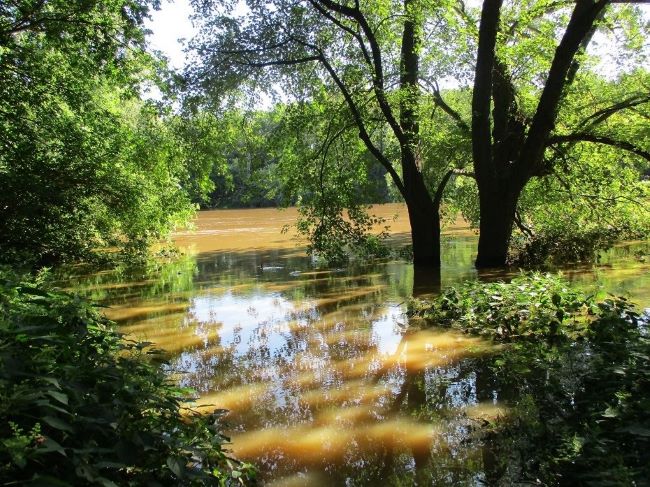 |
| The Potomac River today from the bottom of the bluff,
with high water flooding. |
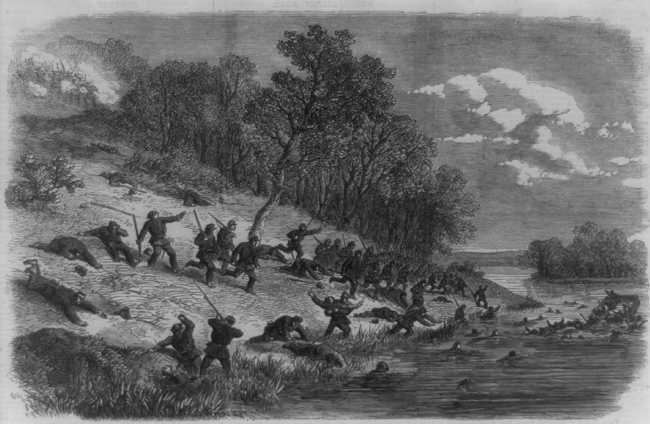 |
| Federal troops were forced to retreat down the bluff while taking Confederate fire. Credit Library of Congress |
At the edge of the battlefield is
America’s third smallest
national cemetery. There are 25 graves that contain
partial remains from 54 Union soldiers killed in the battle
(Federal killed were 223; Confederate killed were less than
150). All but one are unidentified. Most Confederate dead were
removed to Leesburg. Some of the dead from both sides were
shipped home for burial.
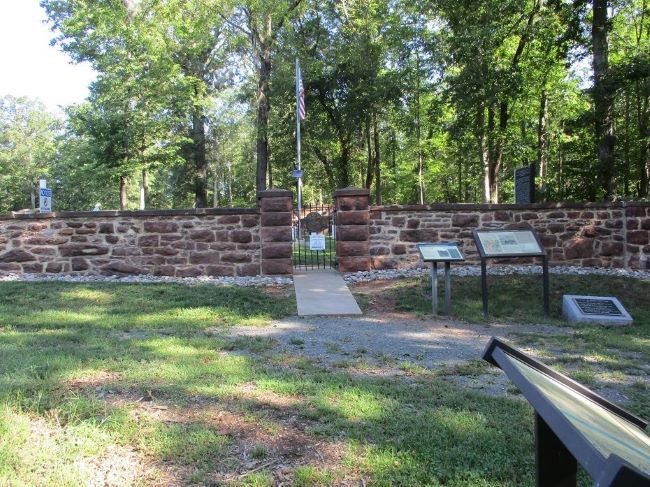 |
|
The battlefield has the third smallest national
cemetery. |
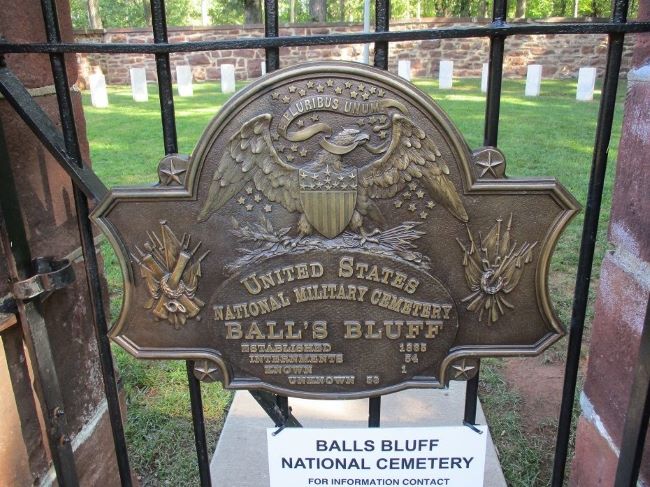 |
| There are 25 graves inside the cemetery. |
One consequence of the battle was the
only death in battle of a sitting U.S. Senator. Colonel Edward
D. Blake, a U.S. Senator, was
in charge at the beginning of the battle and was killed in
action. He was a good friend of the President and his death
did not go over well in Washington, along with the dead bodies
floating down the river. Another consequence was
dissatisfaction by Congress of the early conduct of the War,
resulting in the Congressional Joint Committee on the Conduct
of the War. The committee was dominated by “Radical
Republicans” and General Stone was unfairly blamed for the
Union defeat. Politics was involved and General Stone ended up
in prison with a ruined military career. This episode may be a
reason that other Union generals were very cautious as to not
suffer the same fate.
The Battle of Ball’s Bluff even shows up
in American literature. Herman Melville’s poem “Ball’s Bluff:
A Reverie” was published in 1866. Emily Dickinson also wrote
Ball’s Bluff poems. It was a small battle with a distortional
impact on American history and literature. It is a roadside
historical attraction well worth a stop.
Author/Photographer. Tom Straka is an emeritus professor of
forestry at Clemson University. He has an interest in history,
forestry and natural resources, natural history, and the
American West. Pat Straka is a consulting forester and the
photographer on most of their travel articles. They reside in
South Carolina, but have also lived in Mississippi and
Virginia.
They try to write their articles on lessor known spots or angles on better known spots, like the trail leading to a battlefield, rather than the battlefield itself. Given where they live, they have good access to Revolutionary and Civil War battlefields, and this is a favorite topic.
We'd love your comments!
Public Disclosure--
Please Read
As an Amazon Associate, I earn from qualifying purchases.
The FTC has a law requiring web sites to
let their readers know if any of the stories are
"sponsored" or compensated. We also are to let readers know if any of
our links are ads. Most are not. They are just a way to
direct you to more information about the article
where the link is placed. We have several ads on
our pages. They are clearly marked as ads. I think readers are smart
enough to know an ad when they see one but to obey the
letter of the law, I am putting this statement here to
make sure everyone understands. American Roads and
Global Highways may contain affiliate links or ads. Further, as
their bios show, most of the feature writers are
professional travel writers. As such we are frequently
invited on press trips, also called fam trips. On these
trips most of our lodging, dining, admissions fees and
often plane fare are covered by the city or firm hosting
the trip. It is an opportunity to visit places we might
not otherwise be able to visit. However, no one tells us
what to write about those places. All opinions are 100%
those of the author of that feature column.






















